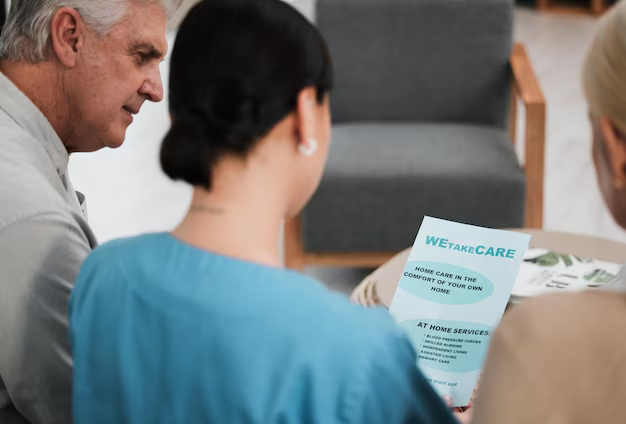Navigating Parkinson's Disease Testing: A Comprehensive Guide
When faced with potential symptoms of Parkinson’s disease, understanding how and when to get tested can be crucial in the early detection and management of this condition. This guide will delve into the testing process, offering insights into what you should expect and exploring the pathways to a reliable diagnosis.
What is Parkinson’s Disease?
Parkinson’s disease is a progressive disorder that affects movement, characterized by symptoms such as tremors, stiffness, and Bradykinesia—slowness of movement. Due to its nature, early and accurate diagnosis is essential for managing symptoms and planning treatment effectively. While there is yet no cure, various strategies can significantly improve quality of life.
Recognizing Symptoms: When to Consider Testing
Identifying the early signs of Parkinson’s disease plays a vital role in management. Common symptoms include:
- Tremors: Shaking, usually in a limb, often starting with the fingers or hand.
- Bradykinesia: Slower movements, making simple tasks more time-consuming.
- Muscle stiffness: Causing pain and limiting range of motion.
- Impaired posture and balance: Leading to stooped posture or balance issues.
- Changes in speech and writing: Speech may become softer, slurred, or hesitate before speaking; writing may become challenging.
Experiencing any of these symptoms doesn't confirm Parkinson's disease. However, if symptoms persist, it may be wise to consult a healthcare professional for further evaluation.
The Diagnosis Process
Initial Consultation
The first step in diagnosing Parkinson’s disease typically involves a visit to a healthcare provider, usually a neurologist specializing in movement disorders. The initial consultation often includes:
- Medical history review: Understanding your health background, including family history and lifestyle.
- Symptom review: Discussing the onset, frequency, and severity of symptoms.
- Physical examination: A detailed examination focusing on the nervous system and motor skills.
Tools and Tests for Diagnosing Parkinson's
Parkinson’s disease lacks a definitive test, such as a blood test, that can confirm its presence. Instead, diagnosis is primarily clinical, based on symptoms and ruling out other conditions. The tests and techniques that aid this process include:
Neurological exam: A thorough assessment of nervous system function, focusing on muscle strength, reflexes, and coordination.
Imaging tests: While not definitive for Parkinson's, MRI or CT scans can exclude other disorders that might mimic its symptoms, such as strokes or brain tumors.
DaTscan: A specific imaging test that allows visualization of dopamine levels in the brain, providing supportive evidence for a Parkinson’s diagnosis.
Delayed but Crucial: Specialist Referral
If the general practitioner suspects Parkinson's disease, a referral to a movement disorder specialist or neurologist is often the next step. These specialists can assess the symptoms more thoroughly, providing a more accurate diagnosis.
Second Opinions: The Value of Thorough Assessment
Given the complex nature of Parkinson's disease, seeking a second opinion can provide you with more information and reassurance. Different specialists may have varying insights, enhancing your understanding of your condition and confidence in the diagnosis.
Understanding the Journey: Testing to Diagnosis
The path from testing to diagnosis can be lengthy and may involve several steps to ensure accuracy:
- Initial assessment by a general practitioner.
- Referral to a neurologist or movement disorder specialist.
- Follow-up consultations: To monitor symptom progression or response to treatment, confirming the initial diagnosis.
This multifaceted approach ensures all underlying conditions or similar disorders are ruled out before a firm Parkinson's disease diagnosis.
Living With the Diagnosis: What Happens Next?
Receiving a diagnosis can be overwhelming, but understanding the next steps can empower you:
Building a Supportive Care Team
After diagnosis, assembling a supportive care team is crucial. This team may include:
- Neurologists: To manage and adjust treatment plans.
- Physical and occupational therapists: To help maintain mobility and daily function.
- Speech therapists: To address speech difficulties that may appear.
Lifestyle Adjustments and Practical Advice
Adjusting your lifestyle plays a pivotal role in managing Parkinson’s:
- Exercise regularly: Physical activity is proven to help maintain mobility and balance.
- Healthy diet: Balanced nutrition supports overall health, potentially alleviating symptoms.
- Community support: Engaging with support groups or community organizations can offer emotional support and practical advice.
Treatment Options
While there is no cure, various treatments can manage symptoms effectively. These may include:
- Medications: To manage symptoms effectively.
- Surgical procedures: Like Deep Brain Stimulation (DBS) in some severe cases.
- Therapies: Ongoing physical, occupational, and speech therapies to enhance quality of life.
The Importance of Ongoing Research
Research in Parkinson’s disease is an ever-evolving field, with constant advancements aiming to improve diagnosis and treatment. Participation in clinical trials might be an option for some patients, potentially offering access to new therapies and contributing to broader medical understanding.
Navigating Care With Confidence
Understanding the testing and diagnosis process for Parkinson's disease equips you with the knowledge to navigate your care effectively. The journey can feel challenging, but access to resources, support groups, and medical professionals ensures that you are not alone on this path.
Key Takeaways 🎯
- Consult a healthcare provider when experiencing persistent symptoms.
- Diagnosis involves multiple steps, like medical history reviews and neurological exams.
- Consider specialist referrals and second opinions for a comprehensive assessment.
- Build a supportive care team to manage life with Parkinson’s effectively.
- Stay informed about ongoing research and treatment advancements.
- Seek out community and therapy support to enhance quality of life.

Related Articles
- Are There Environmental Causes Of Parkinsons
- Can Alcohol Cause Parkinson's
- Can Concussions Cause Parkinson's
- Can Females Get Parkinson Disease
- Can Head Trauma Cause Parkinson's
- Can Parkinson Disease Cause Dizziness
- Can Parkinson's Affect Eyesight
- Can Parkinson's Affect Memory
- Can Parkinson's Affect Speech
- Can Parkinson's Affect Vision